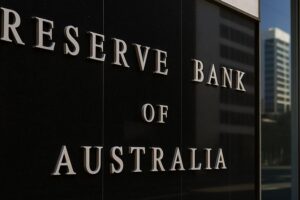Musk Buys US$1B in Tesla Stock: Buy, Hold or Sell?
![]() Ujjwal Maheshwari, September 17, 2025
Ujjwal Maheshwari, September 17, 2025
Elon Musk has once again surprised markets. In early September 2025, reports confirmed that Musk had purchased approximately US$1 billion worth of Tesla shares. The purchase equated to around 2.57 million shares, with buying prices ranging from US$371 to US$396 according to Reuters and the Financial Times. This is Musk’s first open-market buy since 2020, a fact that immediately caught the attention of investors globally.
The market reaction was swift. Tesla’s stock rose about 3.5% immediately after the announcement. For a company as closely linked to its CEO as Tesla, any personal investment by Musk carries weight, but a billion-dollar buy takes things to another level. Investors are now left wondering: is this a bold vote of confidence worth following, a signal to hold steady, or a chance to lock in profits while enthusiasm is running high?
What are the Best Automotive stocks to invest in right now?
Check our buy/sell tips
Why Musk’s Buy Matters
Insider purchases are often viewed as a barometer of confidence. When the leader of a company is willing to commit such a substantial personal sum, it suggests that they believe the company’s shares are undervalued or poised for long-term growth. In this case, Musk’s billion-dollar buy has amplified the narrative that he is backing Tesla’s future with more than just words.
Markets tend to reward this behaviour. For investors, insider buying serves as reassurance that management’s incentives are aligned with shareholders. Musk’s purchase is not simply symbolic. It strengthens perceptions of leadership commitment and could help calm concerns around Tesla’s volatile performance in recent years.
There is also the broader strategic context. Tesla’s valuation has been under pressure from slowing growth, rising competition, and shrinking profit margins. At the same time, Musk has been pushing ambitious projects in robotics, autonomous driving, and AI-driven robotaxis. By buying shares now, he may be signalling to investors that the company’s next chapter is worth betting on. Yet, the flip side is clear: insider buys cannot guarantee that future execution will match market expectations.
Musk’s Pay Proposal and Ownership Ambitions
Musk’s stock purchase is not happening in isolation. It coincides with one of the most controversial corporate compensation proposals in history: a US$1 trillion performance-linked pay package. As outlined by Reuters and AP News, this package sets ambitious performance hurdles. To unlock it, Tesla must reach specific targets in market capitalisation, electric vehicle production, and new verticals such as humanoid robots and robotaxis.
Critics argue the plan sets impossible benchmarks. Supporters counter that Tesla has consistently defied sceptics in the past, transforming the global automotive landscape and proving that electric vehicles could scale profitably. Musk himself has described the package as a reflection of Tesla’s transition from being just an automaker to a leader in AI and robotics. The stock purchase strengthens Musk’s argument. By committing US$1 billion of his own capital, he is effectively telling shareholders: I am willing to take on the same risk you are. For a company that thrives on Musk’s personality as much as its balance sheet, this action adds credibility. It also shores up his control within Tesla, bolstering his influence ahead of the shareholder vote on the pay proposal.
From an investor’s perspective, this dual development, the personal stock purchase and the proposed pay deal, paints a picture of a CEO doubling down on Tesla’s future. The key question is whether these bold moves reflect visionary leadership or simply raise the stakes in an already high-risk environment.
Tesla’s Valuation and Financial Picture
To judge whether Elon Musk’s billion-dollar purchase is a reason to buy, hold or sell, investors need to examine Tesla’s financial picture and valuation in detail. In 2024, Tesla delivered about 1.8 million vehicles worldwide, highlighting continued growth but at a slower pace compared with earlier years. This reflects a maturing EV industry compared with the pandemic era, when adoption surged. Today, delivery numbers reflect an industry that is maturing and far more competitive, with Chinese rivals such as BYD aggressively expanding and gaining ground.
The push to protect market share has forced Tesla into price cuts across key regions, a strategy that has kept volumes high but squeezed profitability. Tesla’s operating margins, once in the mid-teens, have dropped into single digits in recent quarters.
Tesla continues to trade at a significantly higher price-to-earnings multiple than traditional automakers, reflecting investor expectations that it is more than just a car company. The gap shows that investors continue to treat Tesla less as an automaker and more as a technology platform with aspirations in artificial intelligence, robotics and clean energy. Yet such expectations also raise the stakes, since the market is already pricing in extraordinary growth and flawless execution.
The Risks Investors Should Weigh
Every investment carries risk, but with Tesla, the stakes are magnified by its scale, visibility and the central role of its CEO. The most immediate challenge is execution, as Musk’s proposed US$1 trillion performance-linked pay package sets exceptionally ambitious milestones. Should Tesla fall short, the gap between lofty expectations and actual results could quickly sour investor sentiment, with history showing that markets often punish overpromises, particularly when valuations are already stretched. Regulatory and political exposure also loom large. Musk’s outspoken public commentary frequently draws scrutiny, and Tesla’s business remains highly dependent on favourable electric vehicle policies, subsidies and incentives across the United States, Europe and China. A shift in these frameworks could materially affect growth. Competition presents another headwind, with the Chinese giant BYD already surpassing Tesla in certain markets and legacy carmakers from Europe and the US introducing increasingly competitive EV models. Price wars are becoming more common, eroding Tesla’s once-comfortable margin advantage. Finally, macroeconomic headwinds such as rising interest rates, weaker consumer demand and broader global uncertainty could slow EV adoption at a time when Tesla is aggressively expanding capacity and investing heavily in next-generation products. Musk’s stock purchase may signal confidence, but investors must weigh these substantial risks with clear eyes.
Buy, Hold or Sell?
After weighing the facts, investors must make their own judgment. Musk’s billion-dollar buy provides a strong vote of confidence, but whether that translates into a buy, hold, or sell decision depends on your investment outlook and risk tolerance.
For buyers, Musk’s purchase can be viewed as a validation of Tesla’s long-term story. If you believe Tesla will succeed in becoming not just the leading EV maker but also a powerhouse in AI, robotics, and clean energy, then following Musk’s lead makes sense. Insider buys of this magnitude are rare and typically reflect conviction rather than speculation.
For holders, the news serves as confirmation rather than a game-changer. If you already own Tesla, Musk’s move may strengthen your resolve, but it does not necessarily alter the near-term trajectory. Tesla’s valuation remains high, and the execution risks are real. Holding through the volatility may be the right call if you are already committed to the long-term vision.
For sellers or those trimming positions, the logic is also clear. Tesla’s valuation arguably already reflects high expectations, and any misstep could trigger a sharp correction. If you are concerned about rising competition, unrealistic pay targets, or macroeconomic pressures, reducing exposure at current elevated levels may be prudent.
What to Watch Next
Investors should keep a close eye on several developments in the months ahead.
First, Tesla’s earnings and delivery numbers will remain the most immediate barometer of performance. Can the company sustain growth while defending margins? Second, the shareholder vote on Musk’s pay package will be a litmus test for investor sentiment. Widespread approval could be seen as a mandate for Musk to pursue his bold ambitions, while resistance may expose growing scepticism. Finally, the competitive landscape is evolving rapidly. Monitoring how Tesla responds to challenges from Chinese manufacturers and traditional automakers will be essential to judging its future market share.
In essence, Musk’s purchase has set the stage for heightened scrutiny. The market has responded positively in the short term, but the real test will come from Tesla’s ability to execute on its promises in an increasingly crowded field.
Investor Takeaway
Elon Musk’s first open-market Tesla purchase since 2020 is more than just a financial transaction. It is a statement of confidence at a time when Tesla’s valuation, competition, and leadership are under intense scrutiny. The market’s swift reaction, a rise of 3.5% to 6%, demonstrates that investors interpreted the move as bullish.
Yet, the broader picture remains complex. Tesla is a company where execution risk looms large, where valuation is stretched, and where competition is fierce. Musk’s billion-dollar buy is a bold endorsement of Tesla’s future, but it does not eliminate the risks that could derail the story.
For investors, the decision remains personal: do you buy into Musk’s vision, hold steady through volatility, or lock in gains while the market is optimistic? Whatever your stance, one thing is certain: Tesla remains one of the most fascinating and polarising stocks on the market, and Musk’s every move will continue to shape its destiny.
FAQs
- Why did Elon Musk buy Tesla stock now?
Musk’s US$1 billion purchase signals confidence in Tesla’s future and coincides with his proposed US$1 trillion pay package. It reassures shareholders of his long-term commitment.
- Is Musk’s purchase a bullish sign for Tesla?
Yes, insider buying is generally positive. Tesla shares rose 3.5% after the announcement, showing the market welcomed the move. Still, long-term performance depends on execution.
- What is the US$1 trillion pay package?
It is a proposed compensation deal linking Musk’s rewards to ambitious targets, including market value, car production, and new ventures like robotaxis and humanoid robots.
- Should I buy Tesla stock after Musk’s purchase?
If you believe in Tesla’s vision beyond EVs, Musk’s move is encouraging. If you worry about valuation and risks, holding or trimming may be the better option.
- What risks should investors watch?
Execution on growth targets, regulatory scrutiny, intensifying competition, and macroeconomic pressures are all risks that could affect Tesla’s lofty valuation.
Blog Categories
Get Our Top 5 ASX Stocks for FY26
Recent Posts
China Stimulus Hope Fades: What It Means for ASX Iron Ore Giants
The Australian mining sector, particularly the iron ore giants, is undergoing a period of uncertainty, marked by the fading hopes…
RBA Holds at 3.60%: The November Cut That Isn’t Coming
The Reserve Bank of Australia (RBA) recently announced it was holding its cash rate at 3.60%, putting to rest widespread…
When Ray Dalio Talks, Investors Listen! Here’s His Latest Advice For Investors!
As one of the world’s most famous and successful investors, Ray Dalio’s words are always taken notice of by the…



